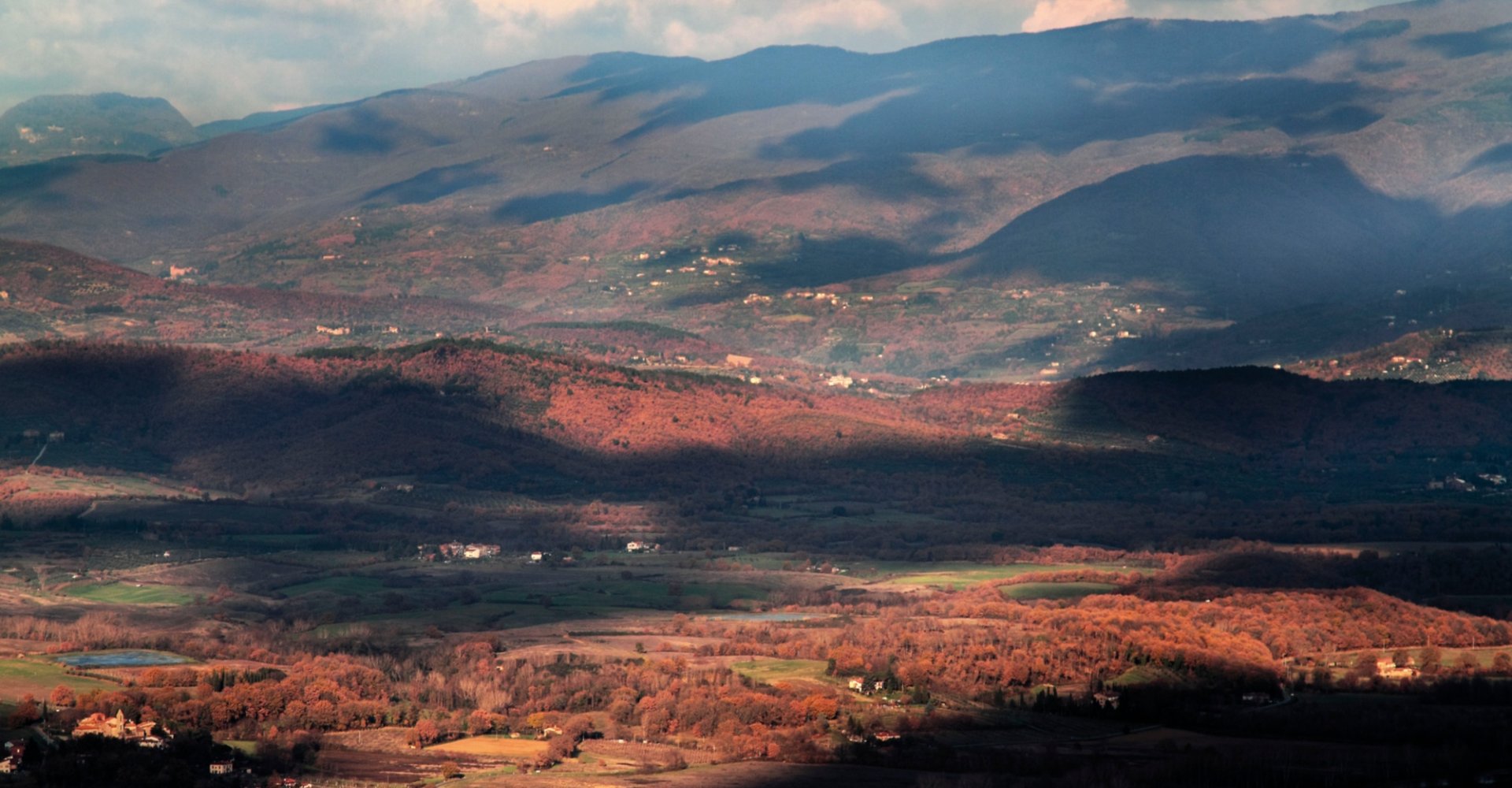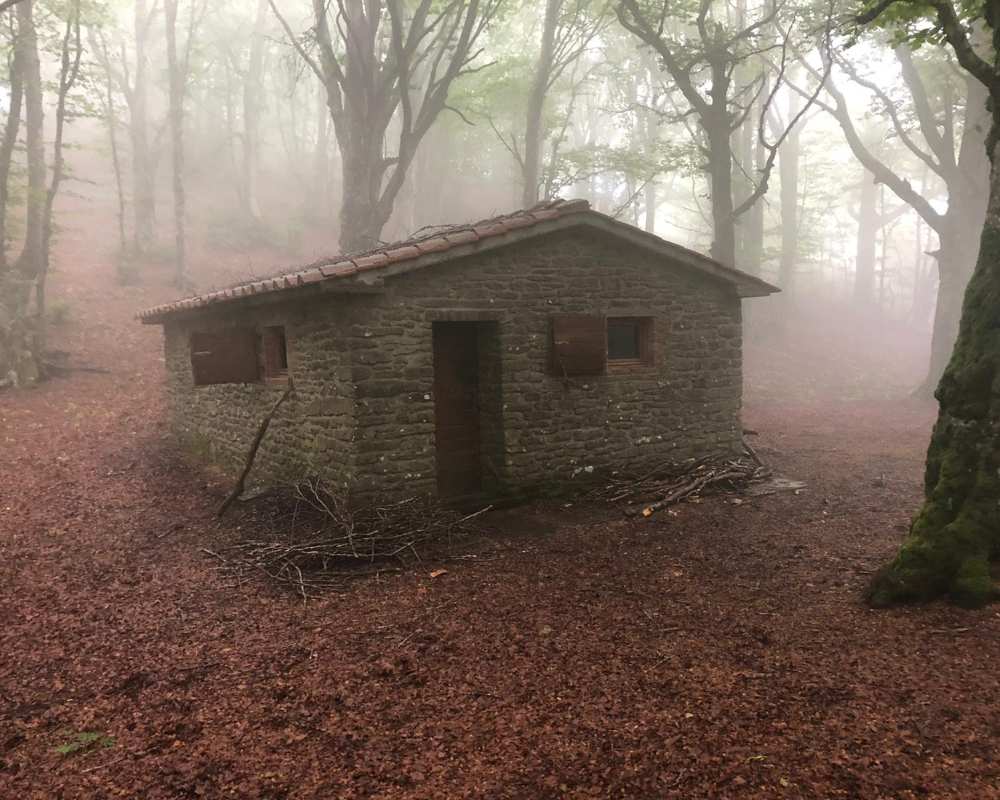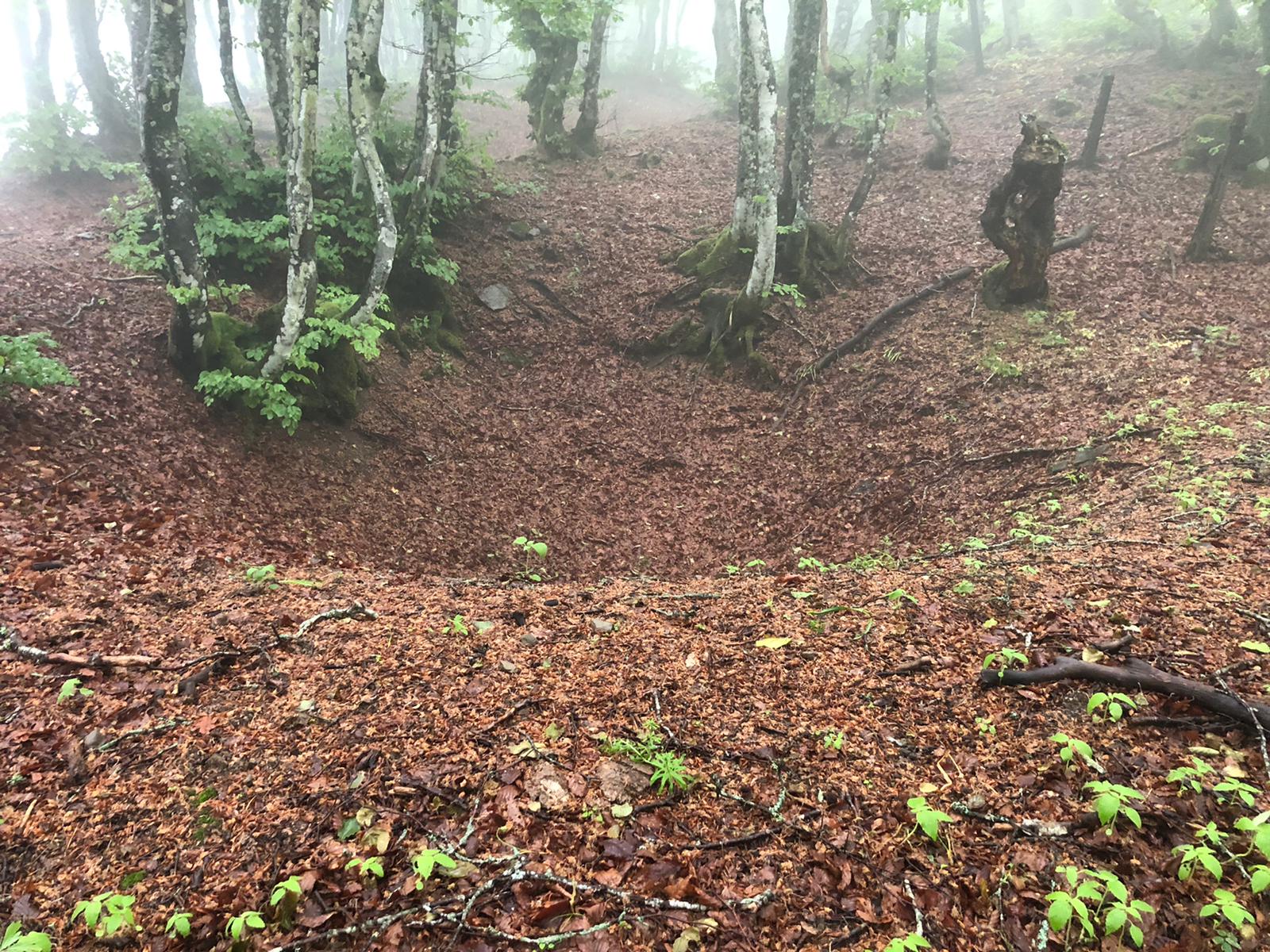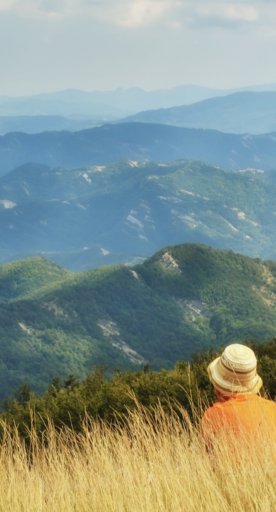
Alpe di Catenaia
A walk in the enchanting woods between Casentino and Valtiberina
The Alpe di Catenaia are the mountain range that divides the Casentino from the Valtiberina; Monte Castello is its highest peak. The defining feature of these mountains is an abundance of water, which nourishes a rich and varied flora, dominated by oak, beechwood and chestnut woods. From up high you can see the picturesque hilltown of Subbiano and the surrounding hamlets in the valley. The area lends itself to experienced hikers as well as to anyone who simply wants to enjoy nature without tiring themselves out; from 1100 metres upwards, you find paths suited to different levels of stamina. By following the St Francis's Way, moreover, you can start in the Alpe di Catenaia and finish in the La Verna Sanctuary.

Do not miss the Prati della Regina, a vast meadow surrounded by beech trees, which grow on Monte Castello up to 1414 metres above sea level. Once there, it is the perfect place to indulge in a sun-kissed picnic.
A particularly striking vantage point can be found on Monte Altuccia (1407 metres high), from where, on the clearest days, you can see as far as the Adriatic and make out the Cesenatico skyscraper. From up there the view leaves one speechless: the panorama ranges from the urban centers of the Valtiberina to the upper Arno Valley and the plain of Arezzo.
Meeting animals is par for the course for anyone walking the Alpe di Catenaia: wild boar, horses and sheep, to say nothing of eagles, falcons and migratory birds. Coming down from the ridge, you will also come across a small lake between the fields and the Casetta del Vaccaio: once a shelter for the local cowherds and now home to rings and drinking troughs for the cattle, the latter's ancient charm is undiminished. The casetta (literally, small house) was also used for centuries as a stop for pilgrims, and is so used even today.

The Alpe di Catenaia is not just an idyllic sight: in the past, during World War II, this place saw many lives taken. Here the defensive line was the Lidia Line, created to allow the completion of the fortifications of the Gothic Line located further north in the upper Casentino. The Gothic Line refers to that line by which the Nazi army sought to protect the Allied advance into northern Italy.
Between August 2 and 10, 1944, the Battle of the Alpe di Catenaia took place, during which there were numerous casualties. Even today, walking through the area, trenches used in wartime can still be found dug, and unexploded German and American army ordnance has also been found.
